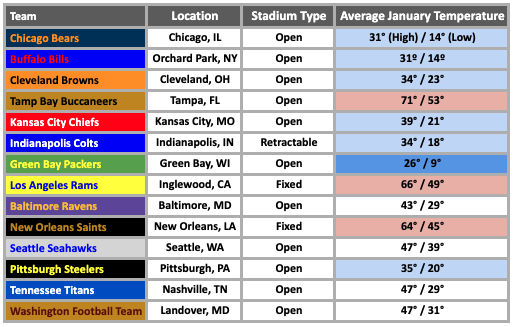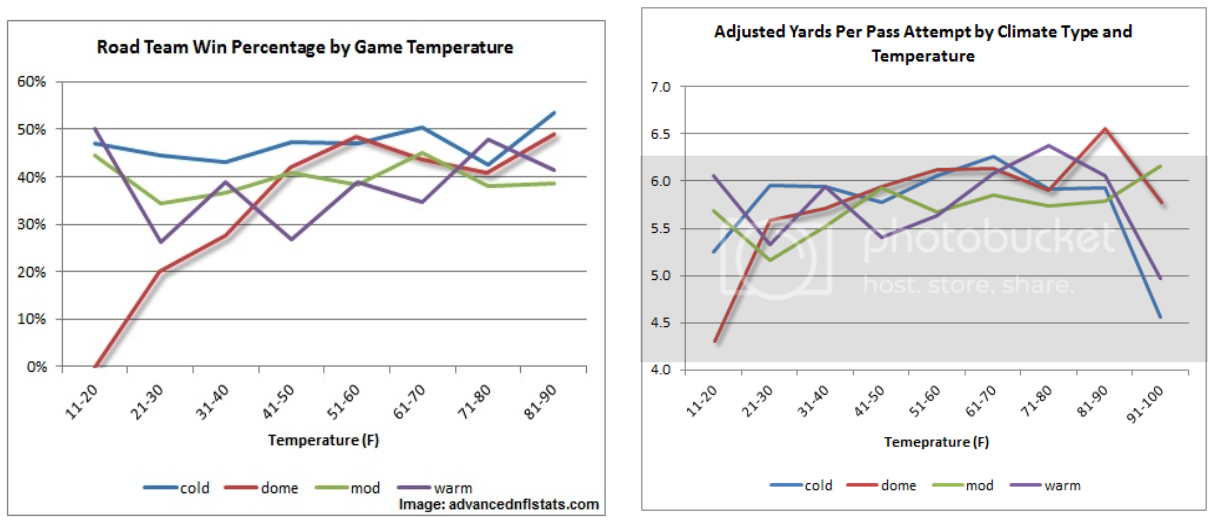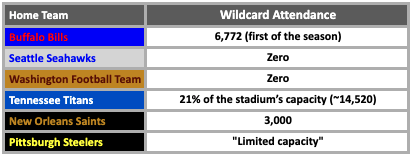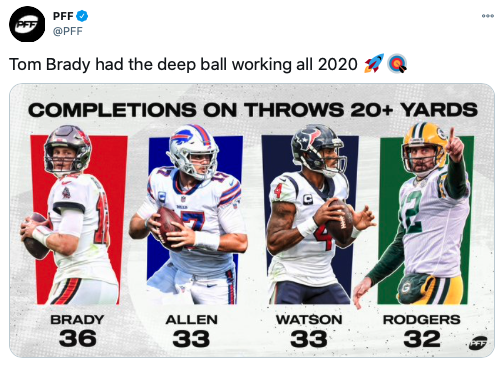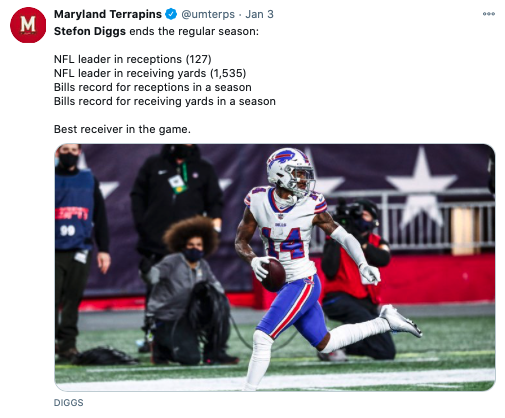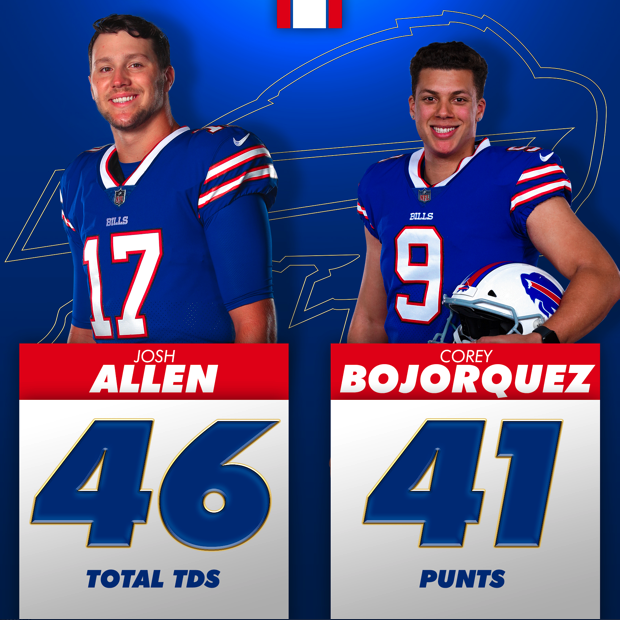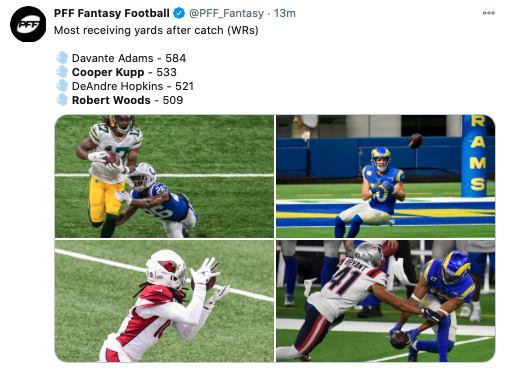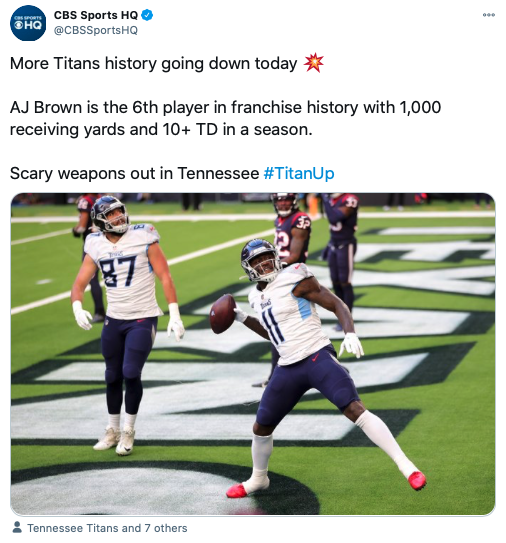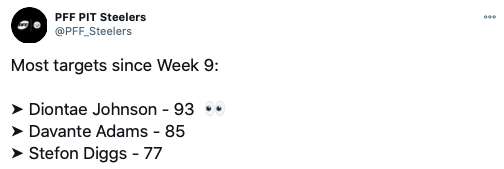Hey there. If you weren’t already aware, you’re reading Part-3 of a 4-Part breakdown on this week’s Wildcard Weekend DFS slate. In this article, we’ll be breaking down all relevant WRs, after already covering QBs, RBs, and TEs.
We have an exciting collection of teams featuring the best-of-the-best facing off in the Wildcard Round of the playoffs. Follow along as we examine each positional grouping for each team to identify the DFS value/upside on both DraftKings and FanDuel. Below is a breakdown of the WR position.
Before we dig too deep into the specifics, it’s important that we factor the following:
On a typical full-game slate, you would normally want to feel comfortable with most rostered players. That would even extend to punt-plays who would normally offer tremendous upside. On shorter slates – six games, 12 teams, it’s sometimes necessary to roster individuals we would normally avoid in order to pay up for studs elsewhere.
It’s also very important to consider late-swap strategies on these smaller slates. If you have any tournament lineups that, after a bad game or two, seem unlikely to cash, you have nothing to lose, and everything to gain by adding exposure to some riskier, lower-owned players.
Note: All numbers in parentheses refer to a player’s salary rank on each site.
Matchups (Vegas): The games offering the highest stacking upside are Baltimore at Tennessee and Indianapolis at Buffalo. With only three points separating the two inter-conference rivals, the fireworks should be set for ignition on Nissan Field come Sunday afternoon with an implied total of 55 points. The Titans currently find themselves as three-point home dogs in spite of A.J. Brown and Corey Davis working in tandem to hand the Ravens crushing defeats in the Divisional Round last season (28-12), and earlier this season 30-24 in overtime.
A little over 700 miles away in Orchard Park, Buffalo is currently riding a six-game winning streak thanks to a truly breakout season from Stefon Diggs. Vegas is currently giving the Colts 6.5 points on the road, but we should never count out the defensive mastermind that is Matt Eberflus in finding ways to contain the explosive Buffalo offense. The Bills could end up playing without slot dynamo Cole Beasley. Nevertheless, a current implied total of 51 points still provides plenty of reasons to highlight this game.
Matchups (Weather): Only three-of-14 playoff teams (Colts, Rams, and Saints) play in a domed or retractable roof stadium. That’s a significant, often overlooked factor for these January playoff games. Since it’s not the purpose of this edition, I’ll only state that, as the temperatures drop, RBs actually experience an increase in efficiency. The same cannot be said of passing games. The following chart provides the stadium type and average January temperature for each playoff team:
From my research, the external factor impacting QB production the most is wind speed of 12-15 MPH-or-more. But a dramatic shift in climate on the road is not that far behind. The following charts fromAdvancedNFLStats.com provide us with some evidence:
The results are obvious. The teams experiencing the most substantial impact from playing in cold weather are those traveling in from moderate- and warm-weather states, and from playing under domes. When we get to temperatures below 25 degrees, the sample is so small that the data is unreliable. And these findings are not limited to this study. Results have been uniform across all of the research I’ve uncovered. As temperatures drop below 40 degrees, QB efficiency drops at an exponential rate on visiting teams from moderate- and warm-weather states, and those playing in domed stadiums. Overall pass attempts decline, yes, but passing YPA, and yardage also follow closely behind.
As for the Why of it all, former Dallas and Miami HC Jimmy Johnson – born in Texas, attended HS in Louisiana, and matriculated at the University of Arkansas – was quoted as saying: “I remember being on the sideline in winter in the Meadowlands and it was so cold I didn't know what down it was, much less what play to use.” If you’d prefer scientific evidence, thisstudy found that both moderate and extreme reductions in ambient temperature during winter sports settings led to decrements in memory, vigilance, reaction time, and decision making. And, very important for our purposes, a reduction in cold stress from acclimation or acclimatization should in theory limit shivering and thermal discomfort and thus potentially limit the level of distraction and thus may positively influence cognitive function.
Matchup (Home vs. Away): In year’s past, home/road splits played a significant role during the playoffs. The climate at home locales has obviously already been covered. However, the absence/limitation of fan attendance mostly eliminates that portion of the home field advantage. Here is a breakdown of the fan attendance during Wildcard weekend:
Depending on the number of fans fitting within the “limited capacity” definition for the Steelers, they could join the Titans as teams with the most significant in-stadium support. Pittsburgh is 5-3 at home – all three losses in the last four weeks, 7-1 on the road, while Tennessee is 5-3 at Nissan Stadium, and 6-2 away from home.
Matchups (Outside): Among all 32 teams, the Seahawks (26.0 FPG) – ranking third-highest – have been the most generous to outside WRs with the Titans (25.4) not that far behind at fifth. Outside WRs have their work cut out for them with nine of the top-13 stingiest defenses earning playoff bids. The difference between the Rams as the elite outside WR defending team in all of football (14.9) and the Chiefs as the third-best (18.4) is a full 19 percent (3.5 FPG). The largest difference in FPG allowed between every other playoff team in these rankings is seven percent (1.6 FPG) between the Colts at 18th-best (22.0) and the Buccaneers at 11th (23.6).
Matchups (Slot): Six of the top-10 slot WR coverage units packed their skills for the playoffs, but seven of the top-15 most benevolent are also along for the ride. That list includes Seattle who has permitted the most production (16.5 FPG), followed by the Browns at fourth (16.2). Others certifying as hospitable to the slot include the Saints, Steelers, and the Colts. The difference between Washington as the most miserly of matchups for slot WRs (10.7) and the Packers as 10th-best (12.3) is only 1.6 FPG (13 percent difference). Other top-10 slot defenses include the Rams, Bears, and Bills.
Matchups (Deep): Keep in mind that game script controls much of the production, several teams are susceptible to deep passing. Although, none of the top-six most vulnerable made the playoffs, perhaps a revealing factor. Of the teams that did, Cleveland ranks seventh with 9.4 deep FP/G, and the Bills come in as supporting the most FP/Target (3.02). Staying with Buffalo, it might not be the best idea to read too much into that number. They actually only ceded the 27th-most FPG since opposing teams only targeted their receivers deep twice/game (lowest among playoff teams). It should come as zero surprise to learn that the Rams took the top mark in deep receptions, yards, and TDs commissioned, as well as FPG (2.4), and FP/Target (0.88).
TL:DR: Evidence suggests that we beware of Mike Evans (game-time decision), playing on the road in forecasted freezing conditions and DK Metcalf drawing a Jalen Ramsey travel. Unsurprisingly, Stefon Diggs offers us the most significant value on both platforms.
Expose: Stefon Diggs, A.J. Brown, Antonio Brown, Allen Robinson II, Diontae Johnson
On the Fence: Michael Thomas, T.Y. Hilton, Terry McLaurin
Fade: Mike Evans, DK Metcalf, Chris Godwin
Buffalo Bills Wide Receivers vs. Indianapolis Colts (Saturday: 1:05 PM EST)
Stefon Diggs (DK: WR1, FD: WR1): The move from Minnesota to Buffalo couldn’t have been scripted any better for Diggsy. He led all NFL WRs in targets (166), receptions (127), and yards (1,535)). Diggs finished fourth in FPs/route (FPRt, 0.511), second in target share (29.6 percent), sixth in yards/route run (YPRR, 2.38), fourth in air yards/game (AYG, 120.0), and 11th with 225 penalty yards gained on defensive pass interferences, holds, and illegal contacts.
If you plan to remain above the money line in Cash, you simply must roster Diggs in spite of his WR1 salaries since it’s anticipated that he’ll be populating over half of the field’s lineups. As for the matchup he’ll face, the zone-heavy coverages (fifth-highest rate) from the Colts have not played up to the standards of a Matt Eberflus passing defense.
Over Indianapolis’ last seven games – which happens to begin with their emotional, overtime victory over Green Bay, Indy obliged opposing WR units to average 15.1 receptions (more than the Lions this season), 207.7 yards (ditto), 1.29 TDs (would rank fifth-most overall), and 43.6 FPG (would rank fourth). Over the former Terrapins WRs last eight games, he’s averaged 24.9 FPG on 10.9 targets/game. Since we can expect the Colts to utilize at least six different coverage shells on at least 10 percent of snaps this Saturday, spend less of your time worrying about the defensive particulars, and more of it crafting your lineups around Diggs.
John Brown (DK: WR22, FD: WR22): It is looking increasingly likely that Buffalo will be without slot dynamo Cole Beasley this weekend. Not that his presence would impact the snaps of Brown since he’s run the fewest routes from the slot than any of the Bills’ WRs, but his absence would free up 6.9 available targets. As the WR22 on both platforms, it’s anticipated that Brown will be owned among the top-10 WRs at between 18-22 percent.
Smoke may’ve only run a route on 60 percent of all dropbacks along with an 11 percent target share in Week 17, but he connected with Josh Allen for gains of 27 and 32 yards to garner 32 percent of his QBs passing volume. That32-yarder was earned while torching Byron Jones in Cover 3 on a 29 route (slant-and-go) to the end zone. From appearances, Brown looked to be fully healthy after a five-game absence. If the Bills can get Beasley back on the field for the Divisional Round, Buffalo could make a serious run. For this week, Brown could provide enough splash plays against Indianapolis’ Cover 3 and 4, in particular, to turn a solid DFS profit.
Gabriel Davis (DK: WR24, FD: WR27): Likely the direct slot snap beneficiary of Beasley’s absence, Davis could put a shorthanded Colts’ secondary without Rock Ya-Sin to the test. The Bills’ 2020 fourth-rounder has forced his way into a crowded WR room to seize at least 12 percent of the target share in nine-of-16 games. Indianapolis is particularly vulnerable to production from the slot as it’s where they permitted the 10th-highest FPG this season (14.6). Davis is projected to join Diggs and Brown within the top-15 most-owned at the position.
Isaiah McKenzie (DK: WR31, FD: WR29): It may seem insane to be forced to consider four different WRs from a single offense, but the above graphic – courtesy of the officialBuffalo Bills Twitter account – should asway your sense of logic. Another direct recipient of Beasley’s available role, McKenzie ran a route on 95 percent of dropbacks in Week 17. He returned his 23 percent target share with a 6/65/2 receiving line, an84-yard punt return for another TD, and a slate-busting 30.5 FPs.
All three TDs were scored in the second quarter, both TD receptions coming from Allen, and both against Cover 0. McKenzie’sfirst TD was gained on a simple 3 route (out) to the boundary. Hissecond TD was actually provided on an insanely difficult no-look dime from Allen – here’s theend zone view – on a scramble drill. Both scores highlight that the Bills are not scared to utilize McKenzie’s skills outside of his normal Jet Sweep/trick play calls, nor should we in our large field GPP lineups.
Indianapolis Colts Wide Receivers at Buffalo Bills (Saturday: 1:05 PM EST)
T.Y. Hilton (DK: WR19, FD: WR18): If the Colts are able to build an early lead, exposure to Hilton would be worrisome. Judging by the Vegas implied total for this one, the odds of seeing that unfold are slim-to-none. We can either look at Hilton’s Week 12-14 production of 23.9 FPG, his work from the final three weeks netting 11.3, or his 17.6 average over those last six games to get an idea on his output against Buffalo.
The Bills have been extremely stingy to wideout groups this season in authorizing the fourth-fewest FPG (32.1), second-fewest over the last four (24.1). If the nasty run defense that’s only sanctioned 90.5 YPG (second-best) shows up, Hilton could receive something he’s only seen twice in 2020: double-digit targets. If so, we might end up kicking ourselves for not utilizing Hilton as the WR19/18. That’ll be especially true in Cash if his projected top-10 ownership numbers hold up.
Zach Pascal (DK: WR26, FD: WR25): If you’re going to attack the Buffalo Cover 3, and 4 zone – just as you should facing the Washington secondary, you do it on the outside. Targeting the slot is not going to end well. Pascal has provided a few weeks of value this season, this will not be another of those weeks running 74 percent of his routes from the slot.
Michael Pittman Jr. (DK: WR29, FD: WR26): I love Pittman’s future, we just need to wait until the Colts actually figure out how to use him. With fewer than 10 FPs in six-straight, we can take a safe pass on the rookie. One final note on Indy’s outlook, let’s not forget that they’ll be a team playing their home games under a dome, and traveling on the road to play in a forecast of freezing conditions.
Los Angeles Rams Wide Receivers at Seattle Seahawks (Saturday: 4:40 PM EST)
Robert Woods (DK: WR10, FD: WR11) and Cooper Kupp (DK: WR13, FD: WR15): A string of recent vanilla WR unit matchups are muddying the waters on Seattle’s pass defense. Facing Colt McCoy, Carson Wentz, Sam Darnold, Dwayne Haskins, Jared Goff when he injured his thumb, and C.J. Beathard provide an idea of the reliability of those most recent numbers. From my point of view, the Rams’ increased rushing rate this season (ninth-most) compared to last (20th) is the most significant concern for their passing offense.
I am anticipating that we’ll see the version of the Seahawks’ Cover 3 that was on pace to endorse the most passing yardage in NFL history than the recent stretch of “dominance.” That’s especially true since they’ll be fielding Jamal Adams at far less than 100 percent health. The one aspect of their defense that does provide reliability is their top-five run defense. To sum all of that up, Seattle’s pass defense = Bad, run defense = Good. Should John Wolford start again, look away from the terror. Despite Sean McVay’s antics, it certainly appears that we’ll see Goff under center after submitting limited practice reps.
With Goff leading the show, both Woods and Kupp face off with a porous secondary, and, according to Vegas, under a negative game script. The WR duos skillsets offer serious reliability with both playing from behind and having Goff delivering the football. Woods and Kupp have ranked No. 1 & 2 over the last two years combined in yards after the catch. Really difficult to determine which of the two will generate those WR1 numbers, but that will not hold the DFS field back as both are anticipated to be rostered among the top-10 WRs – somewhere in the neighborhood of 18-25 percent.
Josh Reynolds (DK: WR28, FD: WR31): Reynolds may be seeing the targets, but his per route production ranked 106th-of-161 qualified WRs indicates those days may be coming to an end. I’m assuming that explains his name listed within the top-15 WR ownership numbers but don’t say I didn’t warn you.
Seattle Seahawks Wide Receivers vs. Los Angeles Rams (Saturday: 4:40 PM EST)
DK Metcalf (DK: WR5, FD: WR8): Metcalf is a quandary all to himself. Facing Cover 1 (man) shadows in Week’s 2 and 12, he gave us 25.0 FPG. Opposed by Patrick Peterson’s man coverage in Week’s 7 and 11, that number plummeted to 9.0. The questionable health of the former CB duo could very well explain some of that discrepancy. All of that said, there is zero confusion about the results from The Wolverine facing zone travels this season. Metcalf produced 9.9 FPG when covered by Jalen Ramsey in Week’s 10 and 16, and James Bradberry in Week 13.
Since Metcalf has been priced within the top-five WRs all season, those three results most definitely resulted in sinking the lineups of all taking the leap. It’s refreshing to see FD step out of the shadows to price Metcalf as the WR8 in this third clash with Ramsey. Health permitting, when we look back on Ramsey following his career, he’ll be viewed among the greatest CBs ever to play the game. Facing the most dangerous playmaker on a weekly basis, Ramsey still ranks third-best among 91 qualified outside CBs in yards allowed/coverage snap (YPCS, 0.57), FPs/coverage snap (FPCS, 0.14), and first overall with 0.097 air yards/coverage snap (AYCS). If you still feel confident following 30-35 percent of the field in locking Metcalf into your lineups, I wish you the best of luck.
Tyler Lockett (DK: WR4, FD: WR9): If any receiver on the field for Seattle this Saturday is going to produce, it’ll come from Lockett. That’s certainly not a direct shot at LAR slot corner Troy Hill. But I wouldn’t be doing my job if I didn’t relay that his coverage has been up-and-down this season. Overall, Hill has played well. He’s only permitted a single TD while collecting three INTs. But his YPCS and FPCS numbers rank outside the top-20 among 56 qualified slot CBs. Those ranks pale in comparison to what Ramsey and Darious Williams have achieved this season.
As with slot coverage across the NFL, Lockett will see a variety of zone defenders from Los Angeles. Baby Lockett’s 40 FPs from Week 3, 56 from Week 7, and 33 last week offer examples of what he can do with enough volume in the right matchups. However, I would not count on seeing anything close to those numbers. If Lockett is able to return to his 17 FPG average, it should be considered a moral victory. The Rams are far-and-away the most elite defense in the NFL. And they specialize in closing down the pass. For my cap dollars, Lockett is another outright fade despite being anticipated to be owned in a third of lineups.
David Moore (DK: WR33, FD: WR32): Moore connected with Russell Wilson for 45 yards that set The Professor up with his four-yard TD run in Week 16. Posting a 45-yard reception facing these Rams is amazing. That said, it was the only target he would see. Just not enough to go around for Moore after the Big 2 are fed.
Tampa Bay Buccaneers Wide Receivers at Washington Football Team (Saturday: 8:15 PM EST)
Chris Godwin (DK: WR3, FD: WR3): I truly love Godwin’s game. He’s been a trusty DFS companion of mine dating back to his Nittany Lion days. That said, I loathe this matchup for him. Washington has allowed a total receiving line of 83/763/2 out of the slot. Even if we carry that pair of TDs over to combine with those other per-game slot averages, the result would be 22 FPs. That production would be great from Godwin, if it were possible. But the Football Team has only allowed 1.7 percent of slot targets to find the end zone.
WFT utilizes Cover 3 and 4 zone shells to lockdown the field between the hashes. In order to take advantage of their third-highest rate of Cover 3, receivers either need to gain immediate separation off the line of scrimmage inside to work back toward the sidelines, or be fast enough to break their CB coverage’s outside leverage directly to the sidelines. Either way, the middle of the field is simply closed off. It must be attacked deep, to the outside.
Against their Cover 4, the middle of the field is open between the two deep safeties. When facing the average Cover 4, the middle LB can be attacked at a depth of about 15 yards. But Tampa Bay will be dealing with Cole Holcomb. He may not receive the the press of fellow coverage breakouts James Bradberry or Jaire Alexander, but don’t think he hasn’t been just as good this season.
Looking at Godwin’s situation from a best-case scenario, he finds a way to connect for one 20-yarder over Holcomb. Then he does enough on the one-third of routes on the outside to finish with 15 FPG. That’s in a BCS. Godwin’s floor is all of the way down. Even in Cash, I will not be following the anticipated 35-40 percent of the field chasing after Godwin’s big Week 17 numbers.
Mike Evans (DK: WR7, FD: WR4): Let’s dig a little into Evans’ background. He grew up in Galveston, Texas where he attended Ball HS. He played college ball at Texas A&M before being drafted by Tampa Bay. Evans has lived and played under comfortable sunshine the vast majority of his career. So allow me to remind you that Evans will take the field in Landover, Maryland on Saturday with temperatures below 30 degrees. As much as I love Godwin’s game, my affection for Evan’s runs deeper. In a normal situation, finding Evans as the WR7/4 to Godwin’s WR3/3 would get me to jump out of bed. This is not a normal situation. I have a process. I stick to it. I never stray. I’m fading Evans across the board.
Antonio Brown (DK: WR12, DK: WR13): Of the Bucs’ Big 3 wideouts, Brown interests me the most. He grew up in Miami, Florida, but he played college at Central Michigan, and spent nearly a decade working for the Steelers. He is fully acclimated to playing in cold weather. Short of digging into the deepest of numbers, I will just pass along that my memory tells me he thrived in freezing conditions while in Pittsburgh.
AB has also run nearly 80 percent of his routes this season on the outside. He doesn’t exactly qualify but, if he did, Brown would hold the top mark with 1.03 FPRt when facing Cover 3 over the last two seasons. Let’s make sure we don’t forget that Brown put together an 11/138/2 line in Week 17. He’s been a monster addition for the Buccaneers that we can count on continuing facing Washington.
Washington Football Team Wide Receivers vs. Tampa Bay Buccaneers (Saturday: 8:15 PM EST)
Terry McLaurin (DK: WR9, FD: WR6): I’m completely torn deciding on F1 McLaurin. He fought through an ankle injury to put up quality numbers in Week 17. But we still don’t know who will start under center. McLaurin will also receive little support in pulling away the attention from the Football Team’s other WRs. The Bucs have not been the most efficient secondary, but they’ve had one of the nastiest pass rushing defenses this season.
I was really hoping we’d see Scary Terry priced outside the top-10 WRs. The reality is far removed from that thought. On FD, McLaurin is untouchable as the WR6. Even if Washington falls behind, recent history lends more credence to J.K. McKissic and Logan Thomas receiving the additional volume on Alex Smith checkdowns. It might actually be good for Terry McScorin’s upside if Taylor Heinicke draws the start. I really can’t believe I just typed that out.
Cam Sims (DK: WR24, FD: WR34): Look elsewhere. Sims certainly has the athletic profile, but he is simply not ready for this level of primetime.
Baltimore Ravens Wide Receivers at Tennessee Titans (Sunday: 1:05 PM EST)
Marquise Brown (DK: WR16, FD: WR17): No other matchup can come close to the potential as the Ravens at Titans. Both QBs are playing at the top of their games, both backfields, albeit with completely different components, are functioning efficiently, and both defenses offer glaring vulnerabilities to fall into a scoring frenzy. For Baltimore, in addition to the 50 percent of snaps devoted to designed runs, 56 percent of Lamar Jackson’s rushing attempts have come scrambling from the pocket. That removes another 10.7 percent of the offensive snaps.
What that all boils down to is a complete lack of volume to support a full complement of receivers. Outside of Mark Andrews, the only dependable target share is fed to Brown. A target share over 25 percent might sound appealing, but not so much when your offense is running the ball nearly two of every three plays. But Hollywood has been able to bypass that issue with six TDs over his last six games. The Titans have been lost in defense on outside WRs without Adoree Jackson this season. Tennessee is bleeding FPs on the outside that will set Brown up for another productive outing priced as the WR16/17.
Willie Snead IV (DK: WR29, FD: WR27): Just not enough targets to go around to give serious consideration to Snead, if he’s cleared to play.
Miles Boykin (DK: WR31, FD: WR45): If Snead does sit with the ankle injury, Boykin’s role would grow. But not enough to take a flier.
Tennessee Titans Wide Receivers vs. Baltimore Ravens (Sunday: 1:05 PM EST)
A.J. Brown (DK: WR2, FD: WR2): The story is entirely different for the Titans’ WRs. Brown is one of the most gifted WRs in the NFL. His level of physicality matches any in the game. With Jimmy Smith at less than 100 percent, the Ravens will be forced to shift Marlon Humphrey from the slot to cover Brown. A.J. will have nearly 30 pounds on Humphrey without much difference in speed.
With Baltimore’s high usage rate of Cover 1 and 3 shells falling directly into the speciality of Ryan Tannehill, it’s only a matter of time before the two connect on splash plays. And that’s far from a slight on Humphrey’s coverage. He’s as talented as you’ll see, he will just be asked to advance from what amounts to super middleweight up to taking on the cruiserweight champ five pounds over the weight limit. Only one other WR on the Sunday slate can go toe-to-toe with Brown1Arthur. On the full six-game slate, Diggs is the clear WR1, but Brown could flip everything around if he sees enough volume.
Corey Davis (DK: WR21, FD: WR15): The fact that Tennessee only feeds two WRs is huge for Davis. If that were not the case, the volume fed to Derrick Henry would present a problem. Since that is the reality, Davis should do well, and he has a recent history of doing so back in Week 11. Davis took Marcus Peters for 3/83/0 of his 5/113/0 total line. However, on FD, Davis’ breakout has not gone unnoticed. His salary has crept up high enough to territory outside of his value. On DK, Davis is squarely in play to kick back some ROI in our direction.
Chicago Bears Wide Receivers at New Orleans Saints (Sunday: 4:40 PM EST)
Allen Robinson II (DK: WR6, FD: WR5): When the Saints build a lead, they cut off much of their supply of those precious Cover 1 snaps. In their place, the Cover 4 rate increases. It may be a problem for his zone-unconscious QB, but not the case for Robinson. His ability to pick out the holes in zone coverage match that of any in the game. For much of the season, the inability to get AR12 the football didn’t come from Mitchell Trubisky, it was the lack of pocket protection allowing the two to play catch.
These teams already met back in Week 8. Even with the talented Marshon Lattimore traveling with Robinson on a decent chunk of routes, he still managed all but a single seven-yard catch of his 5/80/1 total line inside his coverage. But it was Nick Foles under center in that one. Trubisky is far more focused on peppering his No. 1 with volume. He’ll cost you the equivalent in salary, but Robinson is a near-lock to cover a tad over value on volume alone.
Darnell Mooney (DK: WR25, FD: WR24): Mooney looked tremendous in Week 17. His 4.38-speed was on full display facing the Packers. He’s still priced for value, but Robinson will not have a Jaire Alexander shadow ghosting his production. A tourney dart? Anything is possible. But do not expect to see him come anywhere close to the 31 percent target share from last week.
New Orleans Saints Wide Receivers vs. Chicago Bears (Sunday: 4:40 PM EST)
Michael Thomas (DK: WR8, FD: WR9): CantGuardMike is priced to sell. He’s expected to be fully healthy. And the Saints will have a full complement of offensive support. Why am I on the fence with Thomas? The Bears coming in as double-digit road dogs is the culprit. If we were to see this game in the regular season, I’d have zero issue taking several fliers on Thomas in spite of the spread.
In a playoff game, as soon as N’Orleans gets a two-score lead, expect them to lean on their ground game to keep their playmakers fresh. If Chicago is able to surprise the world by pulling ahead of the heavily favored two seed, Drew Brees and Thomas would have a field day against a secondary that’s simply not built to contain WR1’s. The zone-heavy Bears’ secondary was constructed to prevent deep passing. So much so that they’ve incorporated a Cover 6 into their base package. However, the likelihood of seeing this game unfold in that manner is minute.
Emmanuel Sanders (DK: WR20, FD: WR18): If we’re concerned about Thomas, Sanders is definitely not in consideration.
Cleveland Browns Wide Receivers at Pittsburgh Steelers (Sunday: 8:15 PM EST)
Jarvis Landry (DK: WR14, FD: WR12): Since TE is obviously not the focus in this installment, I’ll limit the slot vulnerability from the Steelers to Landry. Pittsburgh is allowing the eighth-most FPG to slot receivers this season (15.0). Over his last five games, Landry has averaged 19.8 FPG on 8.8 targets/game. And don’t let his disappointing seven-point output from Week 6 to disway you. That game took place while Bud Dupree was healthy, fueling the nasty Steelers’ defense most remember. We can look to his 16.4 FPs from Week 17 as more of a floor since he’s averaged 14.8 FPG in eight career games against Pittsburgh.
Rashard Higgins (DK: WR23, FD: WR23): I really want to get behind Higgins as a value play, but the Steelers have been stingy to outside WRs. I just can’t envision a scenario where the Browns would abandon their fourth-highest rate of calling for the run. That even applies to Cleveland coming in as six-point road dogs. At the end of the day, the Browns’ most explosive, dangerous threat is Nick Chubb. It’ll take a significant lead for them to stop feeding him volume but, at that point, the Steelers will have populated their defense with defensive backs. Should Cleveland get past Pittsburgh, a faceoff with the Chiefs would be the time to go after the other Hollywood.
Donovan Peoples-Jones (DK: WR35, FD: WR53): I was hoping we’d see some DPJ to keep the Steelers’ secondary honest. That appears very unlikely with him dealing with both COVID and concussion protocols. That’s pretty much been the story of Peoples-Jones’ young career, dealing with a variety of injuries.
Pittsburgh Steelers Wide Receivers vs. Cleveland Browns (Sunday: 8:15 PM EST)
Diontae Johnson (DK: WR10, FD: WR7): As alluded to above, the only WR on the Sunday slate that can possibly top the potential value of A.J. Brown is Diontae. First, let’s establish that the Steelers have been completely unable to establish the run with either James Conner or Benny Snell Jr.. That could present a significant issue for their chances playing in freezing temperatures. That doesn’t mean the passing offense will be unable to support much of that scoring load.
Removing the trio of games where Johnson left due to injury, he’s averaged 18.8 FPG over his remaining 12 games. But it’s the 11.5 targets/game he averages that present Johnson with the potential to go for 25-plus on any given game. As evidence, he’s eclipsed 20 FPs in six-of-12 healthy outings. The Browns could be without some key secondary contributors including Denzel Ward on Sunday. Anything less than 100 percent paints a red target on the foreheads of the Browns’ defense. Johnson is a plug-and-play WR1-3 on the slate. Expose and do not look back.
JuJu Smith-Schuster (DK: WR13, FD: WR15): It’s been an up-and-down season for JJSS in a contract year. It’s very likely that he is not offered a contract from Pittsburgh with so much WR depth on the roster. That doesn’t mean we can’t squeeze out a little more JuJu production this week. The Browns are giving up the fourth-most FPG to slot WRs this season (16.2). Smith-Schuster’s aerial services weren’t needed in their 38-7 thumping of Week 6. But we saw that potential in Week 17 when he took Cleveland for 18.5.
The Steelers will do everything they can to get the ground game motoring, but I am not expecting any miracles. The offensive burden is going to fall on Ben Roethlisberger and his WR crew. Should they fall behind early in a game I think the Browns will take, Big Ben will push the ball downfield at a frantic rate to avoid watching what appeared to be such a promising season end in the Wildcard round.
Chase Claypool (DK: WR18, FD: WR20): Should this game unfold with the Steelers falling behind, we can also consider Claypool to use his otherworldly athleticism to take advantage of the current ominous circumstances hindering the entire Browns franchise. Diontae is the clear go-to, JuJu has the best matchup … but Claypool is always a significant threat to take multiple touches to the house.


